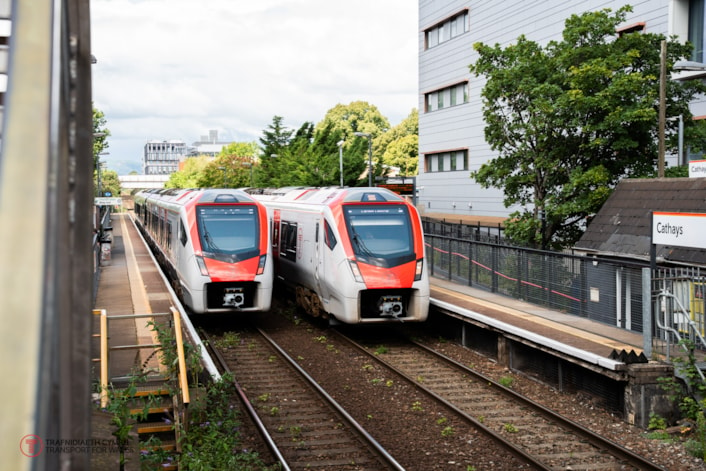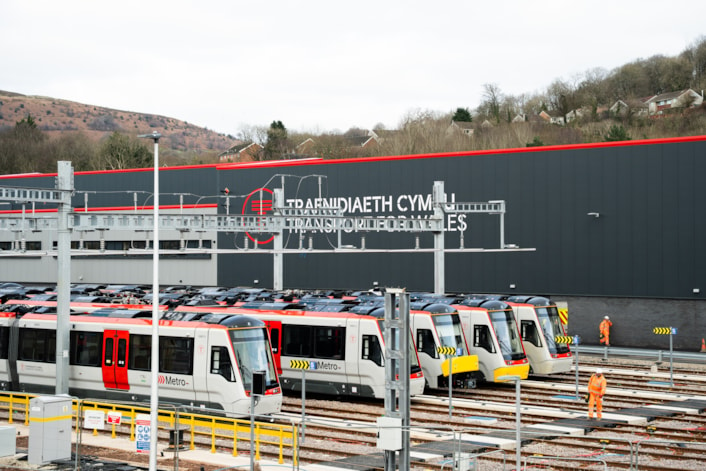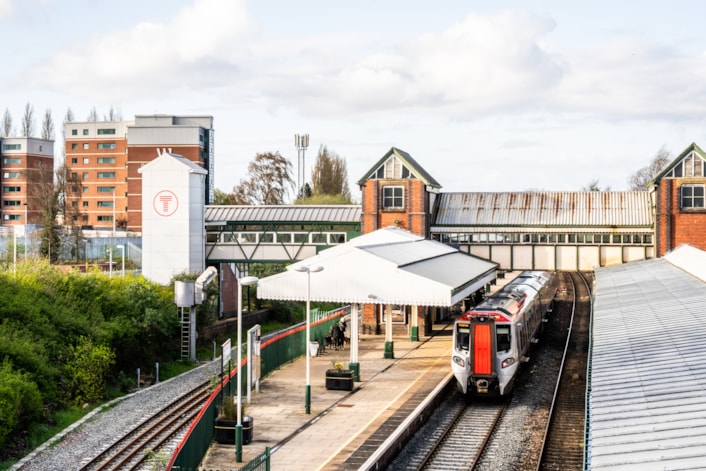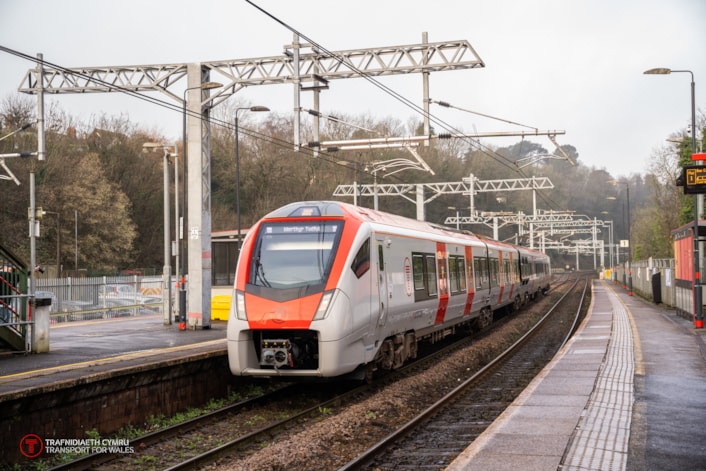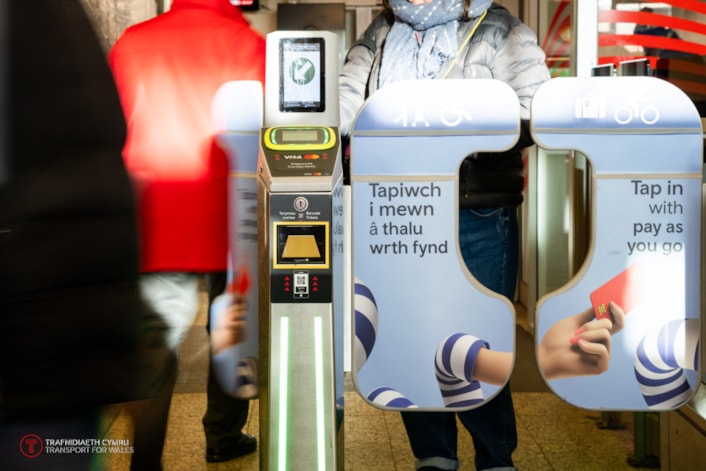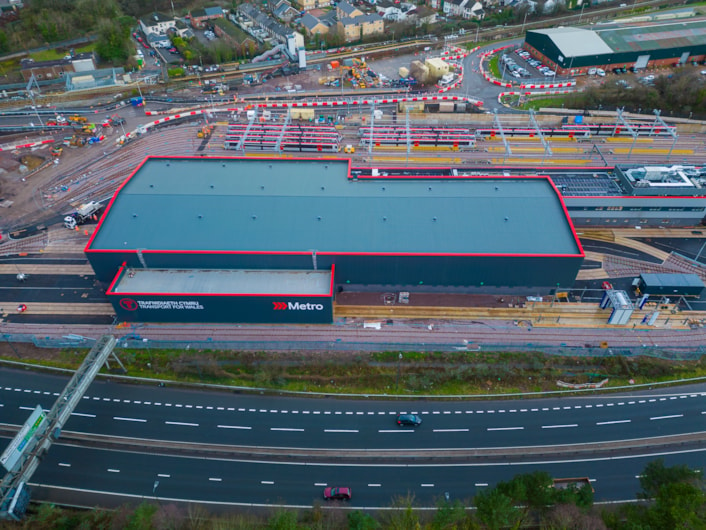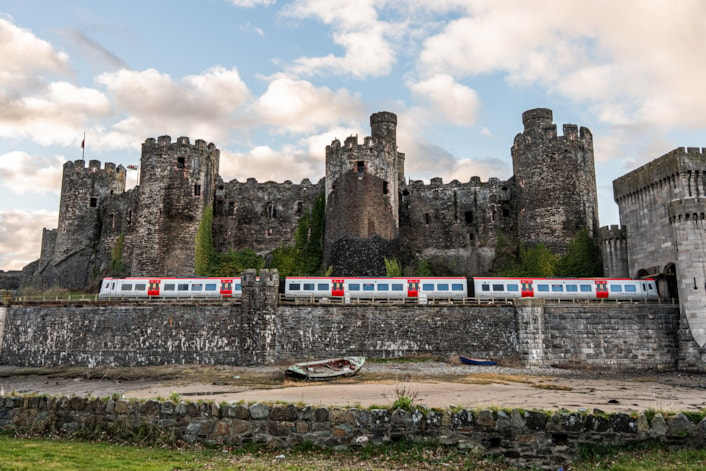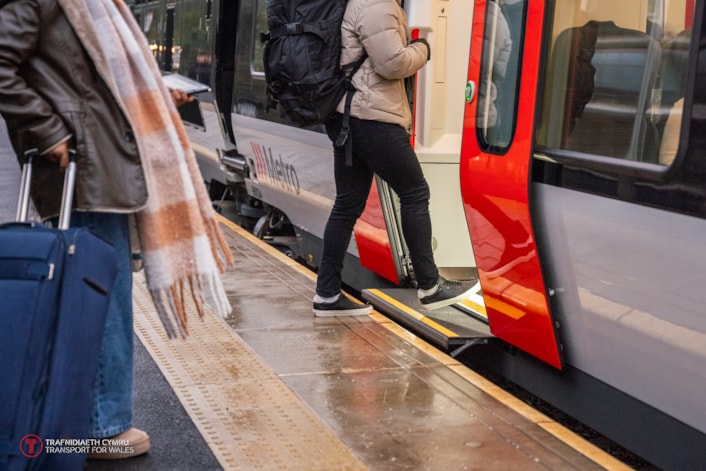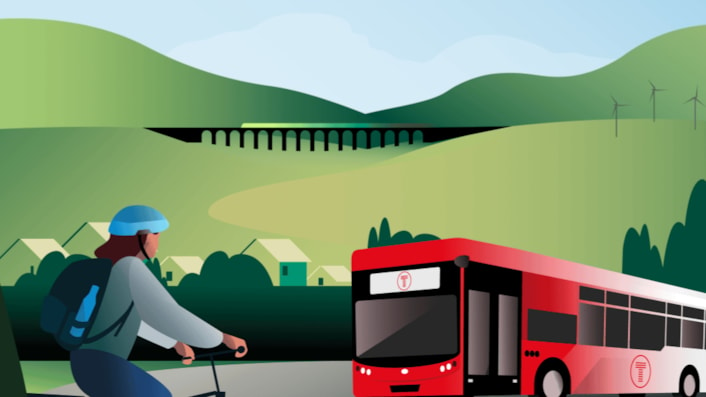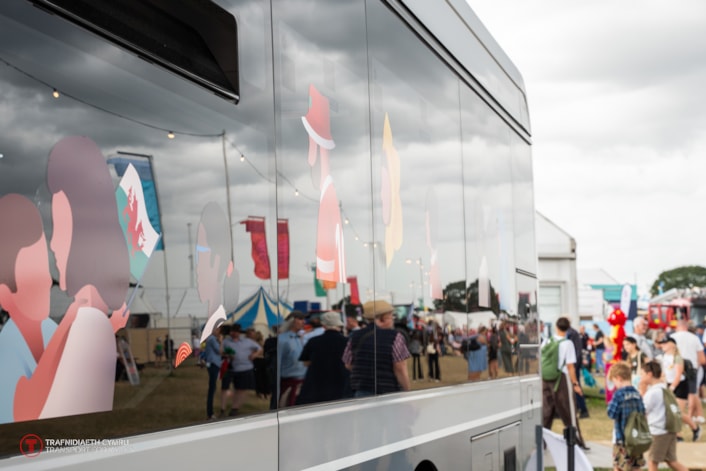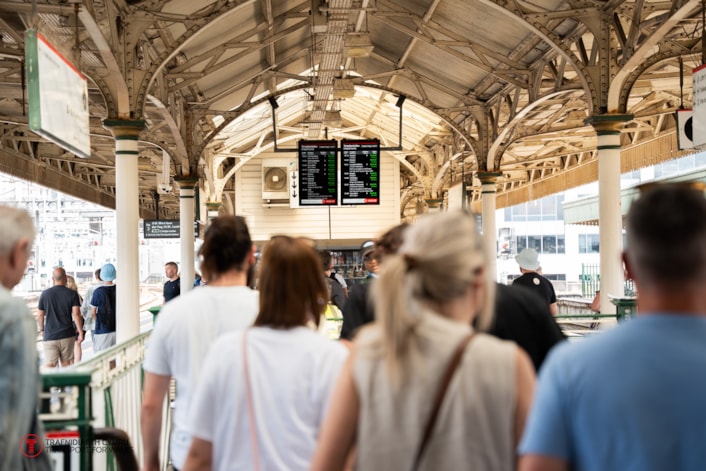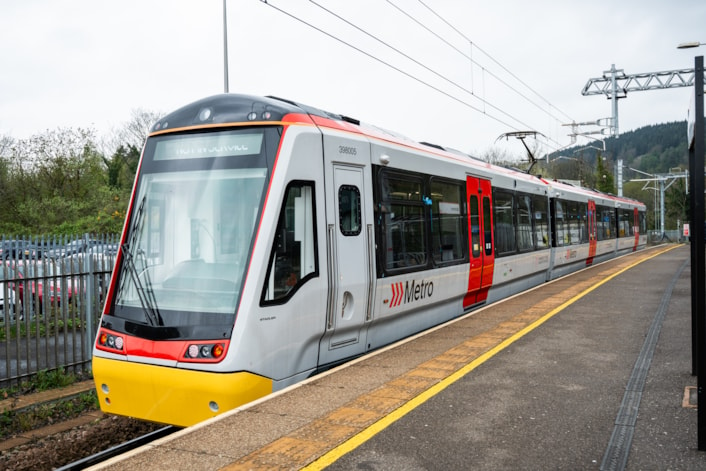30 Oct 2025
Last week, James Price, Chief Executive of Transport for Wales, addressed a room full of rail industry leaders and changemakers at the Railway Industry Association (RIA) event.
Here's the speech that James delivered.
Good afternoon, and thank you for inviting me to speak today.
It’s fantastic to be here. To talk to some of you one to one, and to listen to some of the genuinely thought provoking debate about the future of rail in Wales.
It’s become a bit of a cliché to say that ‘it’s an exciting time for rail in Wales’ - but it’s actually true – and that spirit is very much alive and well within this room.
Many of you will already be working with us at Transport for Wales in some capacity or another - supporting what we’re doing.
To those people I want to say thank you.
And for those individuals and organisations who may potentially work with us in the future – there is real opportunity, so please do reach out.
There are three key elements to my speech this afternoon and all are closely interlinked.
Firstly, I want to reflect on the incredible journey we’ve been on.
Because, within ten years, Transport for Wales has developed from little more than a rough and ready mind-map of ideas on a white board to a fully-fledged transport delivery body: employing 4,500 people, running the Wales and Borders rail service and transforming the Valley Lines network, which along with our supply chain partners, we now own, operate and maintain.
Working within the rail industry - where things don’t move quickly as a matter of course - all of you will know that we’ve gone against the grain in terms of delivering so much change, so quickly.
An early draft of this speech described it as an ‘evolution’ – I think it’s actually more of a ‘revolution’ when you think about it in that context.
I also want to focus on some of the detail in terms of where we are now at Transport for Wales - what our teams are currently working on and the key challenges we’re facing.
And while some of those challenges might be quite specific to Wales, many of them will resonate across the wider industry.
And the final part of this address will look to the future and what that looks like for TfW and for transport delivery more widely in Wales.
So, this speech could be summarised as past, present and future – the story of Transport for Wales, if you like.
But to begin at the beginning.
Back in 2015, the idea of a Welsh Government transport delivery body was, as I’ve already said, little more than words on a whiteboard in Cathays Park – the Welsh Government HQ a mile or so from where we gather today.
And what was the genesis of the idea?
Well, the truth is lots of different things.
Part of it was about responding to a deepening frustration on the part of Ministers - Edwina Hart who was the transport portfolio holder at the time - and Carwyn Jones as First Minister who was exceptionally passionate about transport and its potential to transform Wales.
They were both frustrated politically with the then current rail service, the famous ‘zero-growth’ contract operated by Arriva Trains Wales, that we used to hear so much about, and I’ll come on to that in a bit more detail shortly.
There was also deep frustration with Network Rail delivery at the time, who as an organisation, were not stepping up to the plate in terms of responding to the Welsh Government’s ambition to build a better railway.
To be clear, we’re in a very different place today with Network Rail in Wales, but I’m thinking about projects like North-South Wales journey time improvement, for example, where Welsh Government were essentially investing huge sums in non-devolved assets, in return for pretty poor project delivery and a series of very frustrating delays.
And of course, the reputation of Transport for London was riding high. Partly, thanks to the successful delivery of the London Olympics from a transport perspective – this was still fresh in everyone’s mind at the time.
But as much as anything, TfW was a technocratic response to a political imperative.
Ministers were saying ‘something must be done’ – and given the constraints: the devolution settlement, the restrictions on recruitment within the Civil Service, particularly in Wales, and an obvious political aversion to going down the route of hiving off and privatisation.
An arm-length wholly Welsh Government owned company was the solution we landed on, and in fairly short order Transport for Wales became the name.
It was also partly inspired – and this may be a very obscure point of interest – by the consultancies a number of local authorities had set up to support them in the delivery of key local infrastructure projects, in places like Gwynedd and elsewhere.
What we didn’t know then of course, was that, like all best laid plans – we were to be completely knocked off course by a global pandemic that ushered in fundamental change to travel patterns.
Changing utterly the way people live, work, and lead their lives – and breaking an already precarious financial model for Britain’s privatised rail operators – Covid really is a huge part of the TfW story.
I’m not sure if any of you are familiar with the business philosophy of Simon Sinek.
He’s the one who introduced ‘how’ ‘what’ and ‘why’ into the everyday language of the corporate world.
Well if the ‘how’ has changed with TfW now directly operating rail services under a fully nationalised model post Covid, and the ‘what’ is continuously shifting as we complete different elements of the transformation and then move on to the next, then the ‘why’ has remained consistent and remarkably simple - to improve the lives of people in Wales.
And that’s something quite tangible throughout the organisation. Whether you’re speaking to a guard on the CVL, a transport planner based in Wrexham or Swansea, or one the senior leadership team. It’s a clear sense of purpose that genuinely motivates everything we do.
And if you’ll indulge me, I’d like to use this opportunity to remind everyone just how far we’ve come.
So much has happened, particularly since 2018 when we took over the rail service from Arriva Trains Wales, there’s a risk that people forget just how bad the rail service was. And that’s despite the hard work and commitment of many people working in that business – indeed lots of them have gone from strength to strength as valued members of the TfW team.
But some of you might remember that BBC Wales produced a Week in Week Out documentary in 2017 - fronted by Nick Servini - a year before we took over from Arriva Trains Wales.
The title ‘Wales has train trouble’ sort of says it all. But I’ll read you some of the narrative:
“So what exactly is the problem with trains in Wales?
“They are old, they cost a lot to maintain, there are not enough of them and over-crowding has reached record levels.
“Arriva Trains Wales, who run the Wales and Borders franchise, have a zero-growth contract – which means they are stuck with the same number of trains they had in 2003. “
The Present
I think it’s fair to say that since Transport for Wales took over the rail service, we’ve fundamentally changed that narrative.
These days, when people stop me in the street, they’re far more likely to talk about the new trains they’ve seen—or travelled on—than to share frustrations about delays or overcrowding. That’s not to say we’ve solved every problem, but we’ve come a long way.
We’ve moved from a system that was defined by underinvestment and stagnation—to one that’s now driven by growth, ambition and a real sense of purpose.
The South Wales Metro is perhaps the most visible sign of that change.
Technically, it’s a remarkable achievement. Discontinuous electrification, battery-powered trains, and a level of innovation that’s turning heads not just across the UK, but internationally.
Just last month, we welcomed the Transport Minister from South Africa to our depot in Taff’s Well and believe me, we didn’t have international visitors knocking on the door to find out more when Pacers were the mainstay of our fleet!
Last year, we were the first heavy rail operator outside of London to introduce ‘Pay as you Go’ ticketing to 95 of our Metro stations. It has become our fastest growing ticket and we’re very close to it being used for 2 million customer journeys.
But for me, what’s even more important is the social purpose underpinning the Metro.
This is a railway that serves some of the most disadvantaged communities in Europe. It’s about more than getting from A to B—it’s about opening up opportunity, connecting people to jobs, education, and each other. It’s about changing lives.
And we’re already seeing the early signs of that transformation.
The Metro has been dubbed the “Welsh Tube” in the UK media—and while that’s a catchy headline, it’s also a sign that people are starting to see what’s possible when you devolve power and back it with ambition.
We’re applying that same approach to North Wales now—through Network North Wales—and we’re doing it with the same urgency, the same energy, and the same unconstrained belief in the art of the possible.
And then there’s the fleet.
We’ve invested £800 million in brand-new trains. That’s 148 new trains across four different models—each one a step-change in comfort, reliability and sustainability.
Our CAF Class 197s are already serving people, businesses and communities right across Wales.
The Stadler Class 231s and 756s are transforming journeys in the South Wales Metro. And next year, we’ll see the Class 398 tram-trains enter service.
Introducing that many new trains while keeping the network running is no small feat. It’s involved engineering challenges, driver training, new timetables—and a huge amount of coordination, blood sweat and tears behind the scenes.
But we’re seeing the fruits of our labour. We’ve replaced most of the old fleet. The difference is real—and people are noticing.
Let me give you just one stat that sums it up: once all our new trains are in service, we’ll have 489 carriages. That’s an 81% increase on what we inherited in 2018. And we’ll have 174 trains—up from 128. The Welsh Government deserves huge credit for this level of investment.
We’ve changed the fleet. We’ve changed the expectations. And we’ve changed the conversation.
But there’s so much more to do.
We recently held our first Public Transport Summit in Wrexham, which I hope many of you were able to attend. This was a brilliant moment to bring the industry together and launch Network North Wales.
And we’re already planning the next one, which will go even further—building on that underlying ambition to grow the economy, deliver jobs and new homes - connecting communities, here in Wales, and across the border too.
Because this is about more than trains. It’s about people. Places. Possibilities.
Transport for Wales is no longer a start-up. We’ve grown into a delivery organisation with real capability and credibility. We’ve moved from concept to action—and now, we’re moving from delivery to transformation.
The South Wales Metro is nearing completion. Network North Wales is picking up pace. Our new fleet is rolling out across the country. We’ve laid the tracks, trained the drivers, rewritten the timetables, and brought in the rolling stock.
But the future isn’t just about more trains or more track.
Future
It’s about integration. It’s about creating a transport system that’s seamless, smart and sustainable. One network. One timetable. One ticket.
That’s not just a slogan. It’s a promise – and with bus franchising we will take a huge step towards delivering against that promise.
Imagine a Wales where buses, trains, trams and active travel routes work together—not in competition, but in harmony.
Where rural hubs are as connected as our cities. Where public transport is a natural choice, not a last resort.
That’s the Wales we’re building and we’ve already given it a name - the T-Network – a fully multi-modal transport network that connects Wales.
Where our customers are confident in using our multiple modes to travel throughout the country, where bus and rail routes are connected, and our walking and wheeling routes connect our communities to public transport hubs.
We’re investing in real-time data, integrated ticketing, and digital platforms that make travel easier. We’re thinking about the whole journey—from doorstep to destination. And we’re embracing innovation, not for its own sake, but because it helps us serve people better.
Battery-electric trains. Smart ticketing. AI-powered scheduling. These aren’t buzzwords. They’re part of our roadmap.
And of course, we’re doing all this with the climate in mind. Transport remains one of the biggest contributors to carbon emissions in Wales. That’s why we’re electrifying lines, investing in low-emission vehicles, and designing infrastructure that supports walking, wheeling and public transport.
But sustainability isn’t just about carbon. It’s about fairness. It’s about building a transport system that works for everyone—wherever they live, whatever their background.
We’ve shown that devolved delivery works. When decisions are made locally, when leadership is strong, and when there’s funding and a clear sense of purpose—Wales can deliver. Faster. Better. More efficiently.
And we’re taking that model forward. Into North Wales. Into Mid Wales. Into West Wales. Into every corner of the country.
We’re not just building infrastructure. We’re building skills. Creating jobs. Supporting local supply chains. Investing in people—because they’re the ones who will deliver the future.
The Well-being of Future Generations Act became a significant piece of legislation in Wales in 2015 – and TfW was an organisation that was born shortly after.
We’re fully aligned with the act and understand how we as a transport organisation support the wellbeing goals of: a more prosperous Wales, a resilient Wales, a healthier Wales, a more equal Wales, a Wales of cohesive communities, a Wales of vibrant culture and thriving Welsh Language and globally responsible Wales.
We want to continue delivering against all those key objectives. But we must be honest. The road ahead won’t be easy.
We face funding pressures. Fundamentally challenging climate targets. Changing travel patterns. Rising expectations. But we’re ready.
We’ve built resilience into our organisation. We’ve got the skills, the systems and the partnerships to adapt and respond. And we’re not doing it alone. Collaboration is in our DNA—whether it’s with government, communities, industry or academia.
And as we look ahead to the next Welsh Government, we know change is coming. New ministers. New priorities. New challenges.
But we see that as an opportunity.
An opportunity to re-engage. To re-articulate our vision. To show the value we bring—and to align with the ambitions of a new administration, whatever shape it takes.
We’ve started to earn trust. We’ve delivered results. And we’re ready to keep going.
Because our mission—improving lives through better transport—transcends party lines. It’s something we can all get behind.
At the heart of everything we do is the customer.
That means better stations. Cleaner trains. Simpler ticketing. More responsive services. It means listening, learning, and improving—every single day.
Transport for Wales isn’t just a delivery body. It’s a national asset. We’re woven into the fabric of Wales. We connect communities. We support the economy. We enable growth.
And in the years ahead, our role will only grow.
So what does the next ten years look like?
It looks like delivering the T- Network - a fully integrated transport network. A system that’s green, inclusive and customer-first. Where our customers know what to expect in terms of service and reliability.
It looks like Transport for Wales delivering with pace, with purpose—and with pride.
So to our partners, our stakeholders, and our future collaborators—join us. Help us shape the future. Help us deliver the vision.
Because the future of Transport for Wales is bold, ambitious—and achievable. And together, we’ll make it happen.



















